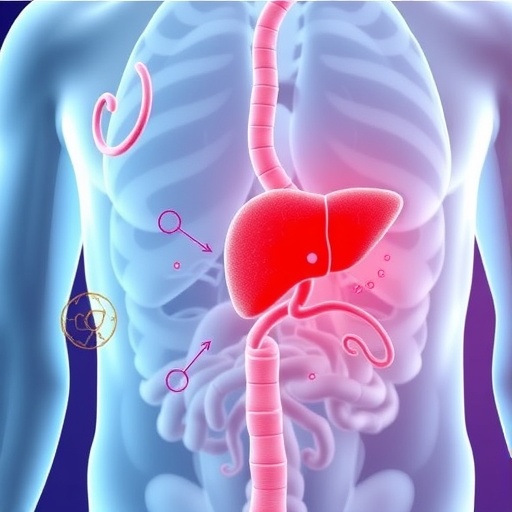PROTECT YOUR DNA WITH QUANTUM TECHNOLOGY
Orgo-Life the new way to the future Advertising by AdpathwayA comprehensive five-year retrospective review conducted in Scotland has provided compelling evidence supporting the safety and efficacy of early medical abortion administered at home up to 12 weeks of gestation. This extensive observational study, uniquely situated within a region where home abortion care is legally permitted up to 12 weeks, challenges current legislative restrictions in other parts of the United Kingdom and Europe that limit home medical abortion to 10 weeks. Published in the renowned journal BMJ Sexual & Reproductive Health, the findings underscore the clinical equivalence of home-based and hospital-based early medical abortion within this gestational window, signaling a pivotal opportunity for policy reform.
The study emerges against the backdrop of adaptive legislative changes introduced during the COVID-19 pandemic, when emergency provisions across Scotland, England, and Wales legitimized the administration of both mifepristone and misoprostol—the pharmacological agents essential for medical abortion—within patients’ homes. While the World Health Organization endorses early medical abortion at home up to 12 weeks, legal limitations in England and Wales restrict this practice to 10 weeks, a constraint that this new evidence advocates to reconsider. In Scotland, however, legislation aligns with WHO recommendations, enabling this timely investigation into safety profiles beyond the 10-week threshold.
Researchers undertook a retrospective review encompassing 5 years of clinical records from NHS Lothian, meticulously analyzing abortions conducted between April 1, 2020, and March 31, 2025. Within this cohort, 14,458 referrals were made to abortion services; from these, 485 women were identified as being between 10 and 12 weeks pregnant, determined via last menstrual period dating or ultrasonographic measurement. Of these women, 371 opted for early medical abortion, with a notable 70% electing for home-based induction using mifepristone and misoprostol, and the remaining 30% choosing surgical abortion within hospital settings.
Efficacy metrics were robust and comparable across modalities, with a 97% complete abortion rate observed in both the home and hospital groups. This near-equivalence signals that early medical abortion at home up to 12 weeks is as clinically effective as traditional hospital-based care. Importantly, three cases of persistent pregnancy post-treatment were documented among the home abortion cohort; one woman elected to continue her pregnancy, while two proceeded to receive hospital-based abortion interventions, highlighting the importance of accessible follow-up pathways.
Safety endpoints revealed a low incidence of serious complications, defined as significant hemorrhage or infection occurring within one month post-procedure. Four such cases arose exclusively within the home abortion group, none of which escalated to require critical care or intensive interventions. The rarity of these events aligns with previous findings that serious adverse outcomes are infrequent in early medical abortion conducted up to 20 weeks gestation, reinforcing a favorable risk-benefit profile for home-based care within the studied gestational timeframe.
An intriguing aspect of the study concerns healthcare utilization following the procedure. Women undergoing medical abortion at home demonstrated a higher rate of unscheduled contacts with hospital gynecology departments or abortion clinics—23% versus 9% for hospital-based counterparts. However, most of these interactions consisted of telephone consultations, indicative of patient reassurance-seeking rather than emergent medical needs. Twenty-three percent of home abortion patients contacted healthcare providers post-procedure, with 11% obtaining exclusively telephonic advice, reflecting an integral component of patient support rather than an adverse safety signal.
This elevated demand for remote support suggests that while home-based abortion confers convenience and autonomy, it necessitates robust telehealth infrastructure and patient education to manage concerns effectively. Additionally, a small proportion of women in the home group required in-person follow-up visits, underscoring the importance of accessible clinical services to address complications or incomplete abortions promptly. Comparatively, the hospital group exhibited fewer unscheduled return visits, an expected outcome given constant medical supervision during the procedure.
The researchers propose that the increased engagement with healthcare professionals observed among home abortion patients is a rational consequence of performing the procedure outside a monitored clinical environment. They emphasize that such contact often pertains to routine questions or reassurance, reflecting the psychological and informational needs unique to home-based medical care rather than increased morbidity. This interpretation supports the integration of comprehensive patient pathways that prioritize clear communication and responsive support mechanisms.
Limitations acknowledged by the study include the relatively small sample size of women presenting between 10 and 12 weeks gestation, a reflection of the typical timing of abortion care-seeking behaviors. The rarity of serious complications further constrains statistical power to definitively quantify differential risks between groups. Nonetheless, the data corroborate existing literature on the safety of medical abortion below 10 weeks, extending confidence to the 10- to 12-week window and reinforcing the clinical rationale to expand home abortion eligibility.
Importantly, the study’s findings lend substantial support to calls for legislative reform to harmonize UK policies with WHO guidelines, advocating for the extension of legal allowance for early medical abortion at home up to 11 weeks and 6 days across the rest of the UK and potentially wider Europe. Such a move could fortify patient autonomy, enhance access to abortion care, reduce the burden on hospital resources, and align health policy with contemporary evidence-based medicine.
Clinical implications underscore that early medical abortion at home is not only a safe and effective alternative to hospital-based procedures but also a model that supports patient-centered care by accommodating preferences for privacy and convenience. This paradigm shift fosters empowerment and could catalyze broader adoption of telemedicine frameworks in reproductive healthcare, resonating with global trends towards decentralization of medical services.
As healthcare systems continue to evolve post-pandemic, this rigorous assessment offers a timely and persuasive argument for policymakers, clinicians, and patient advocates to reconsider existing gestational limits on home medical abortion. The alignment of legal frameworks with empirical evidence is imperative to ensure equitable, safe, and high-quality abortion services that respond to the needs of diverse populations while mitigating unnecessary clinical risks.
In summary, this pioneering research from Scotland elucidates that early medical abortion conducted at home between 10 and 12 weeks gestation upholds high standards of safety and efficacy consistent with care provided in hospital settings. The study’s robust analysis supports an urgent call for expanding legal gestational limits in home abortion care, ultimately striving to empower women with greater reproductive choice and foster inclusive health policies grounded in scientific rigor.
Subject of Research: People
Article Title: Safety and efficacy of early medical abortion at home between 10+0 and 11+6 weeks’ gestation: a retrospective review
News Publication Date: 2-Oct-2025
Web References:
10.1136/bmjsrh-2025-202947
References: BMJ Sexual & Reproductive Health, 2025
Keywords: Abortion, Early Medical Abortion, Home Abortion, Gestational Age, Women’s Health, Reproductive Rights, Telemedicine, COVID-19 Pandemic, Health Policy
Tags: comparison of home and hospital abortionCOVID-19 impact on abortion accessefficacy of early medical abortiongestational limits for abortionhome-based early medical abortionlegislative changes in abortion caremifepristone and misoprostol usepolicy reform for abortion lawsretrospective review of abortion practicessafety of medical abortion at homeScotland medical abortion studyWHO recommendations on abortion


 5 hours ago
4
5 hours ago
4





















 English (US) ·
English (US) ·  French (CA) ·
French (CA) ·